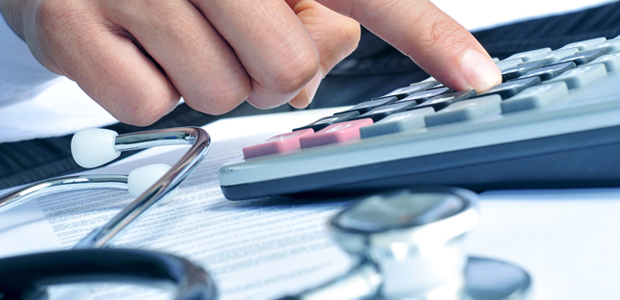Patient Payments in Healthcare are Changing
In spite of a “hot-vaxxed summer,” the COVID-19 pandemic lingers, and sadly, even more robustly in some places than ever before. It’s also continuing to take its toll on healthcare consumers, both psychologically and financially.
That’s one of several reasons why it’s more critical than ever for healthcare providers to stay atop of the most recent payment trends, all of which point to placing more control in patients’ hands when it comes to paying their healthcare bills.
Here are several of the major trends to watch:
Telehealth: Not Just a Fad Anymore
Telehealth became a unique solution for non-urgent care requirements during the onset of the pandemic, driving potentially years’ worth of technological change into a matter of months.
Via this experience, healthcare providers discovered that telehealth worked quite well in primary care, particularly in its diagnostic and follow-up capabilities.
“You end up with conditions resulting from not being able to do the appropriate follow-up that land you back in a higher cost environment. Telehealth is a perfect solution to make sure that those follow-ups occur,” says one healthcare professional.
For the healthcare providers still encountering financial struggles, those who embrace modern technology, including systems that facilitate telehealth, will be better poised to do well in the months and years to come. To boost their competitive advantage, some medical professionals see healthcare providers concentrating on improving their telehealth offerings – such as finding ways to better incorporate them with payments and revenue cycle technology.
Further Consumerization of Healthcare Payments
 As patients assume a growing measure of their financial responsibility for healthcare, they are turning into more discriminating shoppers and insisting on more convenience for their healthcare experience. This includes a call for more certainty and clarity around prices and billing.
As patients assume a growing measure of their financial responsibility for healthcare, they are turning into more discriminating shoppers and insisting on more convenience for their healthcare experience. This includes a call for more certainty and clarity around prices and billing.
America’s system of paying for healthcare has remained both complicated and hazy for years. Amidst this complexity, providers and patients accept both the responsibility and risk. Providers both desire and deserve transparency around payments for health services they have performed. Patients, on the other hand, too often accept care without having knowledge of the price for those services upfront and then encounter chaos when they receive unanticipated or remarkably high medical bills. A recent Waystar study found that consumers are often more worried about medical billing than the quality of care they obtain.
According to one report, 72 percent of patients are often puzzled by the explanation of benefits they obtain from their health insurance plans and 70 percent are perplexed when it comes to their medical bills. This level of confusion leads to much displeasure that is shifted to the provider, regrettably, and not the insurance company.
On the positive side, the same survey also found the fact that consumers have a clear-cut interest in better understanding their financial obligation, with 67 percent of patients ready to investigate the cost of care prior to a visit to the doctor.
Put simply, patients want more accurate and personalized estimates of what they’ll owe and easier, more convenient ways to pay.
Moving Toward Real-time Payments
Technologies that streamline and modernize payment infrastructures have made a huge impression within banking and financial services to provide better customer experiences. The healthcare industry is primed for this precise makeover, and you may well begin to see an immense shift in how providers get paid.
Today, it takes more than 30 days on average for a provider to collect payment for their services owing to the complexities built into in today’s reimbursement processes. This makes it tricky for providers to forecast cash flow. The slow and ineffective process of submitting a claim, awaiting the claim to be settled by the payer, and then face possible denials that require mediation squanders both time and resources. Along with this delay, the uncertainty around how much will eventually be collected from both the payer and patient only increases the financial distress providers face.
Healthcare providers can study the payment models of other industries and tweak the process by tapping into the assets at their disposal. With today’s technology, we may very well witness a shift to healthcare payments taking place in near real-time – at the point-of-care – creating a more seamless, less puzzling encounter for patients and quicker, more streamlined billing processes for providers.
Snail Mail is Old School; Patients Want Newer Digital Payment Options
While way too many healthcare providers persist in sending medical bills via snail mail, an ever-increasing proportion of patients want identical, seamless, and convenient payment options offered in most other industries. Expecting the easy “Amazon experience,” patients want it to be as quick and stress-free to pay for a healthcare bill as it is to purchase a pair of shoes online.
Patients Want a Safe, In-office Experience
Gone are the days of touching things in doctor’s offices without any thought whatsoever as to who had come before us. Today, patients are anxious about cleanliness – and that includes payment terminals. This was quite apparent in a recent survey that disclosed that 76% of healthcare patients are concerned about payment device cleanliness.
These apprehensions are speeding up consumer acceptance of contactless payment methods that do away with touchpoints. And this preference looks as if it is here to stay, as a recent Mastercard survey reported 74% of consumers maintain they will keep on using contactless even after the pandemic.
For healthcare providers, this means that investing in contactless payment methods should be a priority. Aside from making transactions safer for both patients and staff, it’s been demonstrated that providers offering contactless payment alternatives are regarded much more positively by consumers. In fact, the leading payment option patients want providers to offer is contactless debit and credit.
Control is Essential
A somewhat disturbing finding is that affordability remains a major concern, especially with the pandemic having impacted employment, family finances and insurance coverage. Consequently, patients are enthusiastic about payment options that lend a helping hand in managing medical expenses. In fact, nearly half of all patients in a number of surveys said they are apt to make the most of a prompt-pay discount if they can’t afford the service.
Another way patients would like to have more control over their healthcare finances is by being up to date on how much they owe and when payments are scheduled. Consistent with their desire for digital payment systems, patients are veering to online tools to keep up to date.
Next Steps Based Upon Trends
These trends offer important opportunities for healthcare providers to make it safer and more convenient for patients to pay for care while also promoting speedier bill collection.
Going into 2022, uncertainty still looms, but one thing is for sure: technology will persist in renovating the healthcare environment. Looking explicitly at the financial characteristics of care, it’s most probable that providers will incorporate technology that helps eliminate the administrative burden connected to billing and payments.
In Need of Help?
Of course, there is an alternative to obtaining freedom from billing and payments. In response to the multiplying rules and regulations and in an effort to cut costs, many healthcare practices have outsourced their medical billing to third party specialists such as Medwave. For these providers, letting another party manage their medical billing process is an effective way to boost revenue and get back control of the billing process.
Contact one of our medical billing professionals for details.

